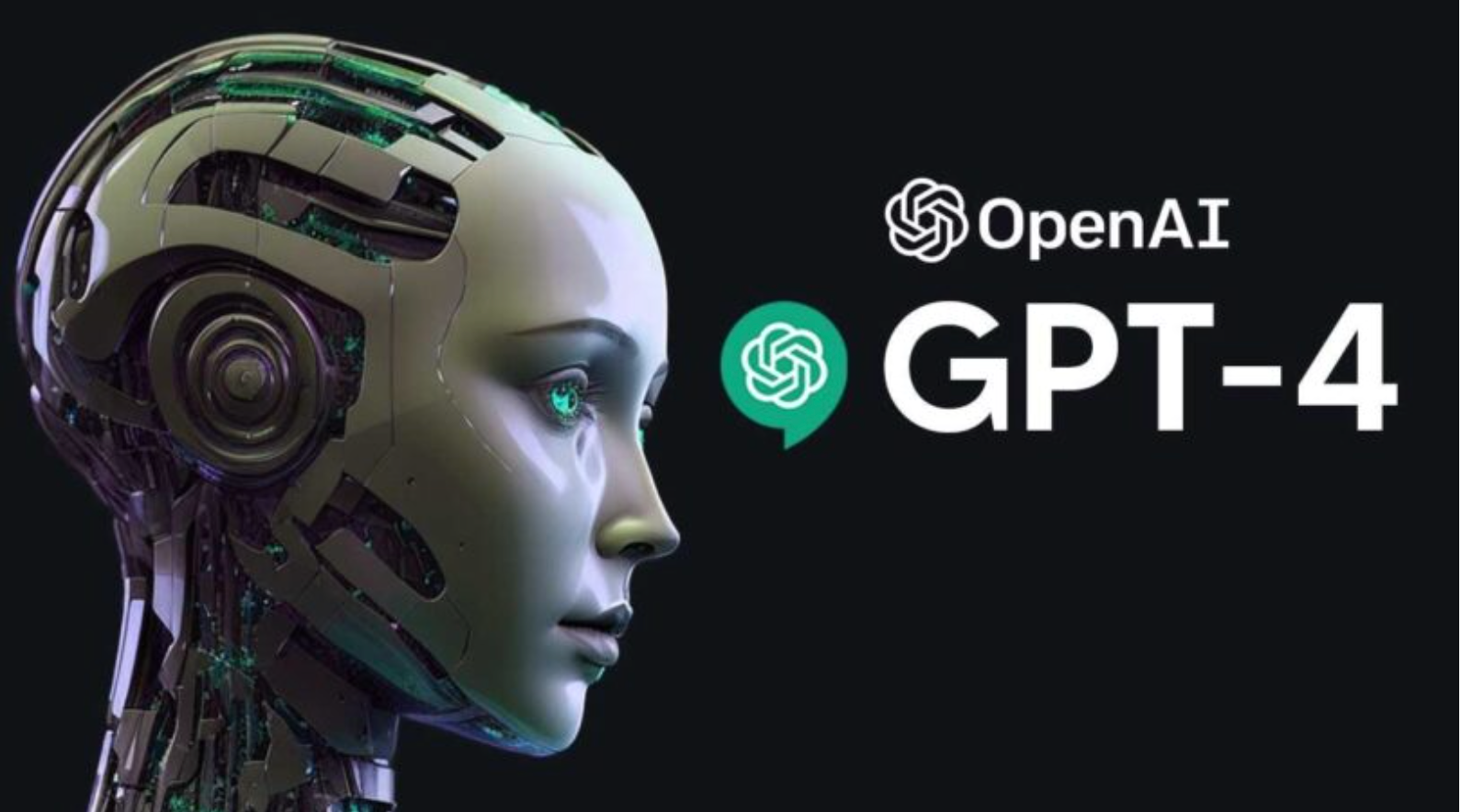Chatbot GPT-4
In the ever-evolving landscape of artificial intelligence, the emergence of Chatbot GPT-4 marks a significant leap forward in the realm of conversational AI. As the successor to its predecessor GPT-3, this cutting-edge technology is set to redefine how interactions unfold in the United States. This article explores the capabilities, applications, and potential impact of Chatbot GPT-4 on diverse sectors, ushering in a new era of intelligent conversations.
1. Unveiling GPT-4: The Evolution of Conversational AI
Chatbot GPT-4, developed by OpenAI, stands as the latest iteration in the Generative Pre-trained Transformer series. Building upon the successes of GPT-3, GPT-4 represents a monumental advancement in natural language processing, understanding, and generation. Its enhanced capabilities promise to elevate conversational AI to unprecedented heights, fostering more nuanced and context-aware interactions.
2. The Keyword Resonance: GPT-4 in the U.S. Conversational Landscape
As Chatbot GPT-4 takes center stage in the U.S., the keyword “GPT-4” resonates across the conversational landscape. Businesses, developers, and users alike are eager to explore the possibilities that this advanced chatbot brings to the table. Examining the keyword landscape provides insights into the heightened interest and anticipation surrounding GPT-4 in the U.S.
3. Natural Language Understanding: GPT-4’s Proficiency in Context
One of the distinguishing features of GPT-4 lies in its enhanced natural language understanding. The chatbot demonstrates a remarkable ability to grasp context, decipher user intent, and respond with a level of comprehension that mimics human-like interaction. Exploring GPT-4’s proficiency in context sheds light on its potential to revolutionize customer support, virtual assistants, and various other applications.
4. Personalization at Scale: Tailoring Conversations for Users
GPT-4’s capabilities extend beyond generic responses, offering a level of personalization at scale. Through advanced machine learning algorithms, the chatbot adapts its language and tone to suit individual users, creating a more tailored and engaging conversational experience. Understanding how GPT-4 achieves personalization at scale unveils its potential in sectors such as e-commerce, content creation, and personalized assistance.
5. Applications in Customer Service: Redefining User Support
In the realm of customer service, GPT-4 emerges as a game-changer. Its ability to comprehend and respond to user queries with contextual understanding enhances the customer support experience. Businesses can leverage GPT-4 to handle complex inquiries, provide real-time assistance, and streamline customer interactions. Examining GPT-4’s applications in customer service showcases its potential to reshape user satisfaction metrics.
6. Virtual Assistants: GPT-4 as Your Intelligent Companion
As virtual assistants become integral to daily life, GPT-4 steps into the role of an intelligent companion. Its capacity to understand nuanced instructions, remember user preferences, and engage in dynamic conversations positions it as a sophisticated virtual assistant. Exploring GPT-4’s applications as a virtual assistant reveals its potential to enhance productivity and efficiency in various personal and professional domains.
7. Content Creation Revolution: GPT-4 as a Creative Collaborator
GPT-4 doesn’t merely respond to queries; it contributes to the creative process. The chatbot’s advanced language generation capabilities make it a valuable collaborator in content creation. From writing articles to crafting marketing copy, GPT-4 augments human creativity, offering new possibilities for content producers. Examining GPT-4’s role in content creation illuminates its potential to revolutionize the creative industry.
8. Ethical Considerations: Navigating Responsible AI Usage
With great technological advancements come ethical responsibilities. GPT-4 raises important questions about responsible AI usage, potential biases, and the ethical implications of deploying such powerful conversational tools. Delving into the ethical considerations surrounding GPT-4 prompts discussions on the importance of transparency, fairness, and accountability in the era of advanced AI.
9. Industry Adoption: GPT-4’s Integration Across Sectors
As GPT-4 proves its mettle, various industries are poised to adopt this conversational AI powerhouse. From healthcare to finance, education to entertainment, GPT-4’s versatility makes it a valuable asset across diverse sectors. Investigating industry adoption patterns provides a glimpse into how GPT-4 is poised to become an integral part of the technological fabric in the U.S.
10. Future Innovations: GPT-4’s Ongoing Evolution and Upgrades
The story of GPT-4 is not static; it’s a narrative of continuous evolution. OpenAI’s commitment to ongoing improvements means that GPT-4 will witness upgrades, optimizations, and new capabilities over time. Analyzing the trajectory of future innovations with GPT-4 offers a forward-looking perspective on the ever-expanding horizons of conversational AI.
11. Collaboration with Developers: GPT-4 as a Creative Partner
GPT-4’s potential as a creative partner extends to collaboration with developers. Its sophisticated language generation can assist developers in coding, writing documentation, and brainstorming ideas. Exploring how GPT-4 collaborates with developers sheds light on the synergy between human creativity and AI innovation, fostering a dynamic partnership in software development.
12. Multilingual Proficiency: Bridging Language Barriers
In the diverse linguistic landscape of the U.S., GPT-4’s multilingual proficiency becomes a valuable asset. The chatbot’s ability to understand and generate content in multiple languages contributes to bridging language barriers, making it a powerful tool for communication in multicultural contexts. Examining GPT-4’s multilingual capabilities highlights its potential to enhance inclusivity and accessibility.
13. Education Revolution: GPT-4 in Learning Environments
The educational sector experiences a revolution with the integration of GPT-4. The chatbot’s adaptability to various learning styles, ability to provide instant feedback, and assistance in creating educational content make it a transformative force. Investigating GPT-4’s role in learning environments unveils its potential to personalize education, support teachers, and empower students in their educational journeys.
14. Emotional Intelligence: GPT-4’s Nuanced Understanding
GPT-4 takes a significant stride in emotional intelligence, recognizing nuances in user emotions and responding with empathy. This advancement holds promise for applications in mental health support, counseling, and other emotionally sensitive interactions. Exploring GPT-4’s emotional intelligence capabilities sheds light on its potential to create more meaningful and supportive conversations.
15. Security and Privacy: Safeguarding User Interactions
As GPT-4 delves into personal and sensitive conversations, the importance of security and privacy takes center stage. Understanding how GPT-4 addresses concerns related to data protection, encryption, and user privacy provides insights into the measures taken to ensure secure interactions. Examining the safeguards in place underscores the responsible deployment of advanced conversational AI.
16. User Feedback Integration: GPT-4’s Adaptive Learning
GPT-4 goes beyond static responses by integrating user feedback into its learning process. This adaptive learning approach allows the chatbot to continuously improve its understanding and refine its responses based on user interactions. Analyzing how GPT-4 incorporates user feedback showcases the iterative nature of AI development, emphasizing a commitment to enhancing user experiences.
17. Real-time Decision Support: GPT-4 in Critical Decision-Making
The advanced capabilities of GPT-4 extend to providing real-time decision support in various domains. From assisting professionals in complex decision-making processes to guiding users through intricate choices, GPT-4’s role in critical decision support is significant. Investigating real-world applications demonstrates how GPT-4 becomes a trusted advisor in diverse decision-making scenarios.
18. User Interface Enhancements: GPT-4’s Contribution to UX Design
GPT-4 plays a pivotal role in enhancing user interfaces (UI) and user experiences (UX). Its natural language understanding and generation capabilities contribute to more intuitive and user-friendly interfaces. Exploring GPT-4’s impact on UX design reveals how it influences the evolution of interfaces to better align with user expectations and preferences.
19. Conversational Data Insights: GPT-4’s Contribution to Analytics
The conversations facilitated by GPT-4 generate valuable data insights. Analyzing these conversational data points provides businesses, researchers, and developers with valuable information about user preferences, common queries, and emerging trends. Understanding how GPT-4 contributes to conversational analytics sheds light on the potential for data-driven decision-making and strategy formulation.
20. Democratization of AI: GPT-4’s Accessibility and Inclusivity
GPT-4 contributes to the democratization of AI by making advanced conversational capabilities more accessible. Its user-friendly interfaces and widespread applicability contribute to inclusivity, allowing individuals and businesses of varying sizes to harness the power of advanced AI. Examining the democratization aspect underscores GPT-4’s role in making AI technologies available to a broader audience.



